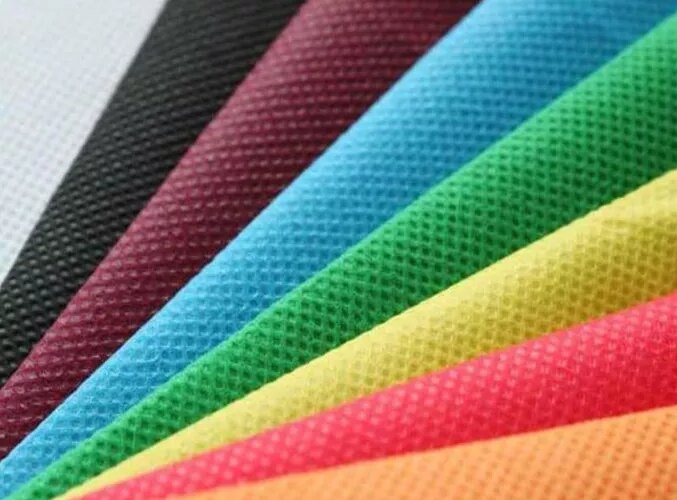Polypropylene is a thermoplastic known for its heat and chemical resistance. When used to make fabrics, it produces water-resistant, durable, and easy-to-clean products.
What is polypropylene fabric, also known as PP fabric?
Polypropylene fabric (also known as PP fabric) is a type of textile material created from the polymer called polypropylene. It is a plastic material that falls under the category of polyolefins. Unlike some other plastics, polypropylene is non-polar and partially crystalline in nature. In terms of global usage, it is the second most commonly used plastic, following polyethylene. It finds wide application in various industries, such as packaging, consumer goods, straws, and other industrial products.
Phillips Petroleum, an American oil company, made a significant breakthrough in 1951. During their research on gasoline from propylene, scientists Robert Banks and J. Paul Hogan serendipitously stumbled upon the creation of polypropylene. Recognizing its potential, they realized that polypropylene was just as valuable as polyethylene and could be used in various applications.
In 1954, a group of Italian chemists led by Giulio Natta accomplished the breakthrough of synthesizing this substance in polymer technology. Following this achievement, Montecatini, an Italian company, swiftly initiated the production of polypropylene to meet the demands of both commercial and consumer markets. However, it was not until 1957 that polypropylene was further refined and transformed into a material suitable for large-scale manufacturing and global distribution.
This particular type of plastic, known as polypropylene, has shown promise in the textile industry. Polypropylene fabric is unique because it is a nonwoven fabric, meaning it is created directly from the material without the necessity of a weaving process. One of the major advantages of this fabric is its ability to manage moisture. Unlike other fabrics, polypropylene does not absorb external moisture. Instead, any moisture that comes into contact with the fabric moves through it completely.
Polypropylene fabric is an extremely lightweight synthetic fiber that offers excellent resistance to acids and alkalis. What sets it apart is its remarkably low thermal conductivity compared to other synthetic fibers. This makes it a perfect choice for use in cold weather, as it provides effective insulation to keep the body warm.
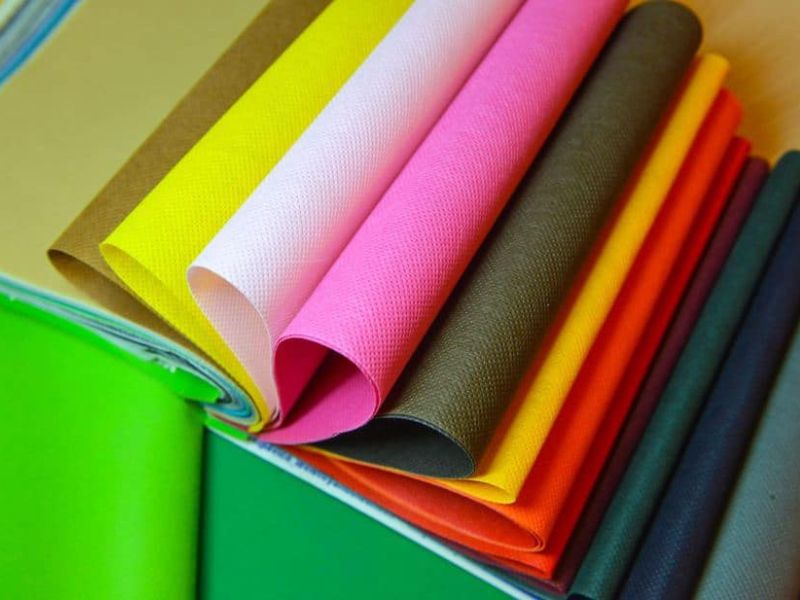
Polypropylene fabric, also known as PP fabric, is a versatile textile made from a synthetic polymer called polypropylene. It is a type of thermoplastic material that is created through the process of melt spinning. This fabric has gained popularity due to its numerous advantageous properties. Polypropylene fabric is lightweight, durable, and resistant to abrasion, making it suitable for a wide range of applications. Additionally, it has excellent moisture-wicking abilities and is quick-drying, making it ideal for use in sportswear and outdoor gear. PP fabric is also known for its resistance to chemicals, mildew, and UV radiation, which makes it highly suitable for various industrial and commercial uses. With its versatility and reliability, polypropylene fabric has become a popular choice in the textile industry.
II. Categorization of polypropylene fabric
There are numerous additives that can be mixed with liquid polypropylene in order to alter its characteristics. These additives allow for the modification of the material’s properties. Moreover, when producing polypropylene fabrics, two primary types of plasticizers are typically employed.
- Homopolymer polypropylene is a polypropylene resin that is considered a homopolymer in its pure state without additives. It is generally not considered a good choice for manufacturing.
- Most polypropylene fabrics are copolymers, with polypropylene being divided into two types: block polypropylene and random polypropylene. In block polypropylene, the plasticizers are arranged in a square pattern, while in random polypropylene, the plasticizers are arranged randomly. Both types are used in the production of polypropylene fabrics, but block polypropylene is generally preferred in practical applications.
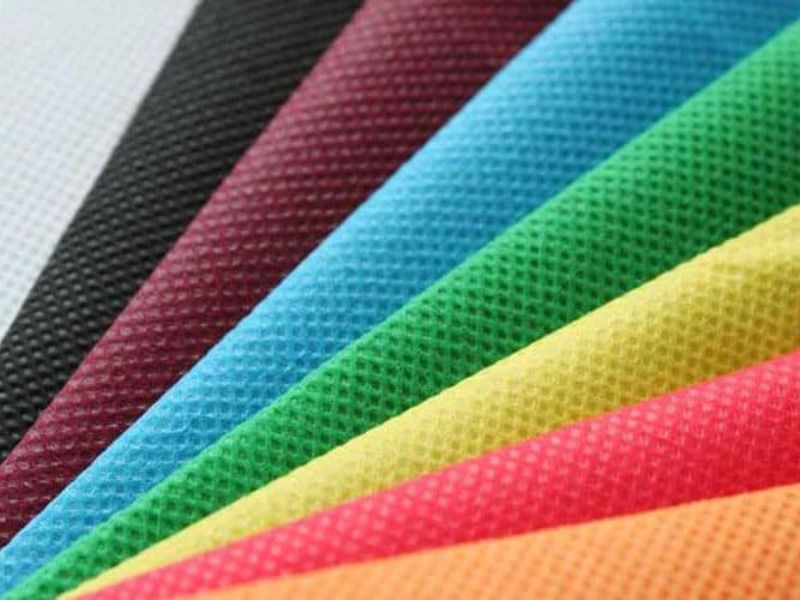
Polypropylene fabric can be categorized into various classifications based on different factors such as the manufacturing process, appearance, thickness, and usage. The manufacturing process mainly involves two types, namely woven and non-woven. Woven polypropylene fabric is produced by interlacing polypropylene threads together, resulting in a sturdy and durable material. Non-woven polypropylene fabric, on the other hand, is created by bonding the fibers together without the need for weaving, which yields a softer and more flexible fabric.
In terms of appearance, polypropylene fabric can be further classified into different finishes, including matte, shiny, textured, and patterned. These finishes depend on the specific treatment applied to the fabric during the manufacturing process, giving it different visual and tactile qualities.
The thickness of polypropylene fabric also plays a role in its classification. It can range from thin, lightweight fabrics suitable for applications like packaging, to thick, heavy-duty fabrics used in industries such as construction and agriculture. The thickness or weight of the fabric is measured in GSM (grams per square meter) and determines its strength and durability.
Furthermore, polypropylene fabric is classified based on its specific applications. It can be categorized as geotextile fabric, which is commonly used in civil engineering projects for erosion control and soil stabilization. Additionally, polypropylene fabric can be used in the production of bags, apparel, home furnishings, furniture upholstery, and medical textiles. Each application requires different characteristics and specifications, such as water resistance, breathability, and flame retardancy.
Overall, the classification of polypropylene fabric encompasses its manufacturing process, appearance, thickness, and usage, allowing for a wide range of options to meet various requirements in different industries and applications.
Polypropylene fabric has distinct traits that set it apart from other materials.
Polypropylene, like many other fabrics, possesses inherent qualities that make it highly durable and resistant to color fading and stains. This is primarily due to the unique structure of polypropylene, which remains unchanged even after the fabric is synthesized. As a result, the dyeing process does not have any impact on the fabric’s colorfastness and stain resistance. However, it’s worth noting that polypropylene can only change its color when it is in its hot liquid form, and this change can occur with the use of either organic or inorganic pigments.
One notable benefit of polypropylene fabric is its inherent stain resistance. Because polypropylene cannot be dyed, it remains naturally resistant to stains. This quality makes polypropylene fabric a highly desirable option for upholstery and textile applications. Whether it is used for furniture or other textile items, polypropylene fabric offers the advantage of being resistant to stains, ensuring longevity and ease of maintenance.
When polypropylene fabric is used in upholstery applications, it remains consistently clean due to its non-dyeable structure. Any stains that may appear will only be on the surface between the polypropylene fibers, allowing for easy cleaning with regular detergents. There is no need to worry about altering the color of the fabric when cleaning because polypropylene is not only colorfast but also simple to maintain.
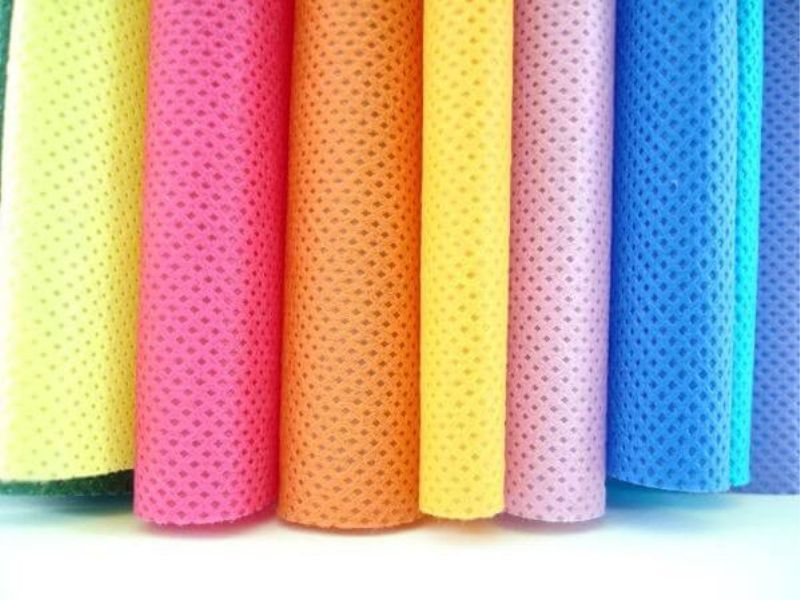
Polypropylene fabric is a type of textile material that possesses certain distinctive characteristics. This fabric is made from polypropylene fibers, which have several unique properties. Firstly, polypropylene fabric is known for its exceptional strength and durability. It is highly resistant to tear, abrasion, and wear, making it ideal for applications that require a long-lasting and resilient material.
In addition to its strength, polypropylene fabric is also lightweight and has a low density. This makes it easy to handle and transport, making it a preferred choice for industries that require materials with high strength-to-weight ratios. Furthermore, polypropylene fabric is resistant to water and moisture, ensuring that it remains unaffected when exposed to wet environments. This characteristic also makes it suitable for outdoor applications where protection against rain and humidity is necessary.
Another notable feature of polypropylene fabric is its resistance to chemicals and solvents. It does not easily react or degrade when exposed to substances such as acids, alkalis, oils, or greases. This makes polypropylene fabric applicable for applications that involve contact with harsh chemicals or potentially corrosive substances.
Moreover, polypropylene fabric has excellent thermal properties. It has a low thermal conductivity, meaning it does not readily transfer heat, making it a good insulator. This characteristic makes it suitable for use in applications that require temperature regulation or insulation, such as in the production of protective clothing or thermal blankets.
Furthermore, polypropylene fabric is highly breathable, allowing air to pass through the material. This makes it comfortable to wear, as it helps to regulate body temperature and prevent moisture build-up, making it suitable for clothing and other textiles worn close to the skin.
Overall, the characteristics of polypropylene fabric, including its strength, lightweight nature, resistance to chemicals and moisture, thermal insulation properties, and breathability, make it a versatile material widely used in various industries, including automotive, healthcare, construction, and agriculture, among others.
Polypropylene’s properties are examined in this section.
Polypropylene fabric possesses numerous remarkable advantages that make it a desirable material for various applications. Here, we highlight five exceptional properties of this fabric:
1. High durability: Polypropylene fabric is highly resistant to wear and tear, making it suitable for long-lasting use. It can withstand frequent washing and exposure to harsh environmental conditions without losing its integrity.
2. Excellent moisture-wicking properties: This fabric has exceptional moisture management capabilities. It efficiently absorbs and displaces moisture, allowing quick evaporation and keeping the wearer dry and comfortable.
3. Lightweight and breathable: Polypropylene fabric is renowned for its lightweight nature, making it a preferred choice for clothing and athletic wear. It allows for easy movement and breathability, ensuring optimal comfort even during vigorous activities.
4. UV resistance: With its inherent UV-resistant properties, polypropylene fabric provides excellent protection against harmful ultraviolet rays. This makes it suitable for outdoor applications, such as sun umbrellas, tarps, and protective clothing.
5. Hypoallergenic and non-irritating: Polypropylene fabric is hypoallergenic and gentle on the skin. It does not cause irritation or provoke allergies, making it ideal for sensitive individuals or those with skin sensitivities.
These exceptional properties contribute to the popularity and versatility of polypropylene fabric in various industries, including apparel, healthcare, automotive, and outdoor equipment.
- Chemical Resistant: Polypropylene fabric is known to be a strong material that is resistant to many organic solvents, acids and alkalis. However, this fabric is susceptible to corrosion by oxidizing acids, chlorinated hydrocarbons and aromatics.
- High mechanical strength: Polypropylene fabric has high mechanical strength and good tensile strength of about 4,800 psi, allowing the material to withstand heavy loads despite being very light. Good tensile strength has helped people apply polypropylene plastic to the textile industry through fiber spinning.
- Antibacterial: Polypropylene is also resistant to bacteria, so it is used in medical applications such as medical vials, diagnostic equipment, petri dishes, intravenous bottles, food trays, pans, medication containers, and disposable syringes.
- Good heat resistance: The melting point of polypropylene is 163.8 °C, and the safe use temperature is 82.2 °C. This means that products made from polypropylene will not degrade or be damaged when used below 82.2 °C.
- Good water resistance: Polypropylene is considered to be a very waterproof material. In a 24-hour immersion test, polypropylene absorbed less than 0.01% of its weight in water, making polypropylene products virtually waterproof and impermeable.
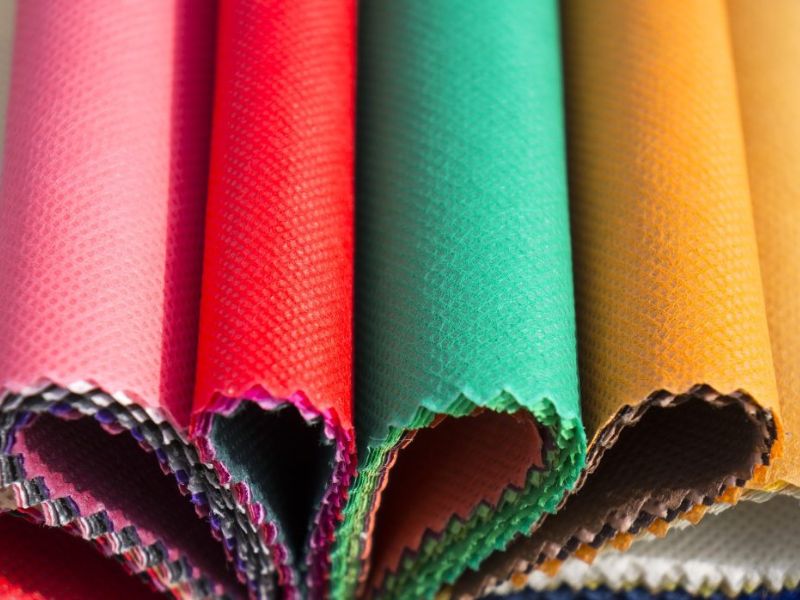
Polypropylene is a versatile and widely used thermoplastic polymer. It is a type of plastic that is made from the combination of propylene monomers. Polypropylene possesses several distinctive properties that make it highly desirable in a variety of applications.
Firstly, polypropylene is known for its excellent chemical resistance. It can withstand exposure to a wide range of chemicals, including acids, alkalis, and solvents, without undergoing any significant degradation. This property makes it an ideal choice for containers, pipes, and tanks that are used in industries such as chemical manufacturing and transportation.
Secondly, polypropylene has a high melting point and good thermal stability. It can tolerate temperatures up to 160°C, making it suitable for applications that involve high heat resistance. Additionally, polypropylene has low thermal conductivity, which means it has excellent insulating properties. These characteristics make it an excellent material for use in the production of appliances, electrical components, and automotive parts.
Another key property of polypropylene is its lightweight nature. It is a low-density material, which means it offers a high strength-to-weight ratio. This feature makes it an attractive choice for applications where weight reduction is essential, such as in the automotive, packaging, and sporting goods industries.
Furthermore, polypropylene is highly resistant to moisture and water absorption. It does not easily absorb water or become weakened when exposed to moisture, making it suitable for outdoor and water-related applications. This property also contributes to its longevity and durability.
Lastly, polypropylene exhibits good impact resistance and toughness. It can withstand heavy loads and impacts without breaking or shattering. This makes it suitable for use in products that require impact resistance, such as storage containers, furniture, and packaging materials.
In conclusion, polypropylene possesses a multitude of advantageous properties, including chemical resistance, high heat resistance, lightweight nature, moisture resistance, and good impact resistance. These properties make it an exceptional material for a wide range of industrial and consumer applications.
Some common uses for polypropylene fabric include packaging materials, textiles, and medical supplies.
Application within the fashion and accessories sector.
- Thanks to its colorfastness and resistance to sunlight, humidity, bacteria and especially water, polypropylene fabric is widely used in construction works, outdoor equipment and accessories.
- Polypropylene fabric is ideal for creating stretchy and durable sportswear due to its flexibility and ability to transmit moisture. This has made polypropylene a popular choice for winter clothing, used as a lining to keep warm in clothing.
- In summer clothing, polypropylene is known for its good sweat absorption and excellent moisture transfer properties, making it especially suitable for sportswear. However, polypropylene also has some limitations such as not being suitable for hot water washing, making it difficult to remove odors from sportswear. Its sensitivity to UV rays is also a weakness that makes this fabric unsuitable for the production of jackets.
- Polypropylene fabric is commonly used in everyday clothing and accessories. For example, it is often used as a lining in baby diapers. Direct contact with the skin helps prevent moisture from the outside from coming into contact with the skin, reducing the risk of rashes, irritation and diaper rash in young children.
- In addition, polypropylene fabric is also commonly used in footwear production.
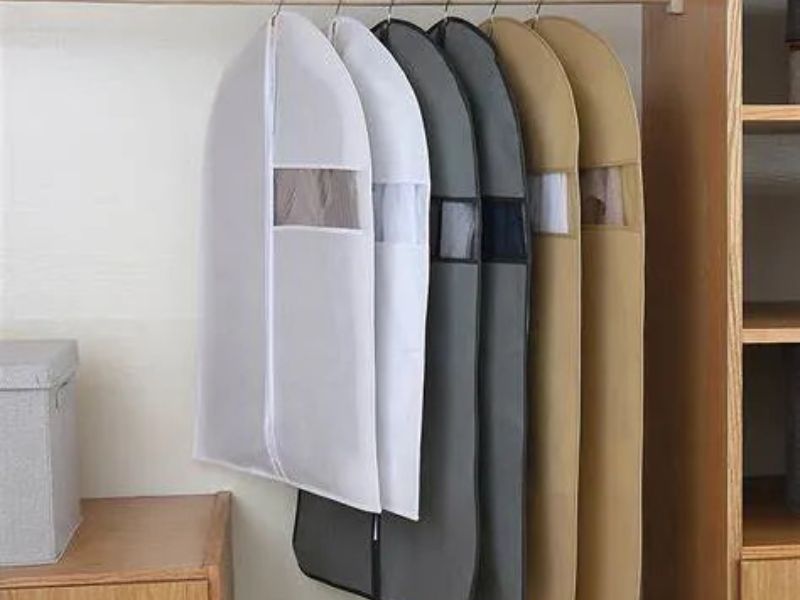
The application in the clothing and accessories industry has a significant impact on various aspects of the business. From the design and production process to marketing and sales, technology plays a crucial role in improving efficiency and enhancing customer experience.
In terms of design and production, advanced software applications are used to create unique and appealing clothing designs. Designers can utilize computer-aided design (CAD) software to experiment with different patterns, colors, and styles, allowing for faster and more accurate design iterations. This not only speeds up the design process but also enables designers to create innovative and complex designs that may not have been possible without technology.
Once the designs are finalized, technology is used for garment manufacturing. Automated cutting machines are employed to precisely cut fabric pieces, reducing errors and minimizing waste. Sewing machines with computerized controls aid in achieving consistent and high-quality stitching. Additionally, specialized equipment like 3D printers can be used to create prototypes and samples, enabling designers to visualize their creations before mass production.
In the marketing and sales aspect, technology offers various tools to promote clothing and accessories effectively. Online platforms and social media channels provide a vast reach and enable companies to showcase their products to a global audience. E-commerce websites allow customers to browse and purchase items conveniently, while virtual try-on solutions and augmented reality experiences enhance the online shopping experience.
Furthermore, technology facilitates inventory management and supply chain operations. Retailers can leverage data analytics to forecast demand, optimize inventory levels, and ensure timely replenishment. This helps in maintaining efficient stock levels, minimizing stockouts, and reducing excess inventory, ultimately leading to improved profitability and customer satisfaction.
Moreover, technology aids in customer relationship management (CRM) and personalized marketing. Through customer databases and analytics, companies can gain insights into customer preferences and behaviors, enabling personalized recommendations and targeted advertising campaigns. This personalized approach enhances customer engagement and loyalty, driving repeat purchases and fostering long-term relationships.
In conclusion, technology revolutionizes the clothing and accessories industry by streamlining the design and production processes, enhancing marketing and sales strategies, optimizing inventory management, and fostering personalized customer experiences. Embracing technology can give businesses a competitive edge in this highly dynamic and evolving industry.
Implementation within the handbag sector.
- Polypropylene fabric is widely used in the sports and fashion industries, especially in the production of bags, drawstring backpacks and suitcases. Bags made from polypropylene are sturdy, durable, reusable, waterproof and lightweight. What’s special is that you can easily decorate and design them to your liking, from printing logos to embroidering monograms. Bags and backpacks made from polypropylene fabric are not only a suitable choice for those who want to design and create themselves, but also because they are reasonably priced, convenient and especially beautiful and durable.
- In addition to its use in clothing and accessories, polypropylene has also become a popular choice in the mass-market jewelry industry, with handbags topping the list of polypropylene uses among modern designers. Clothing, handbags, and jewelry all showcase the common advantages of polypropylene: durable, flexible, printable, less susceptible to external factors, non-irritating to the skin, and always fashionable.
- Polypropylene fabric is not only used to make drawstring bags and backpacks, but is also the main ingredient in the production of PP woven bags and non-woven bags. Its role is undeniable in many applications of the bag manufacturing industry.
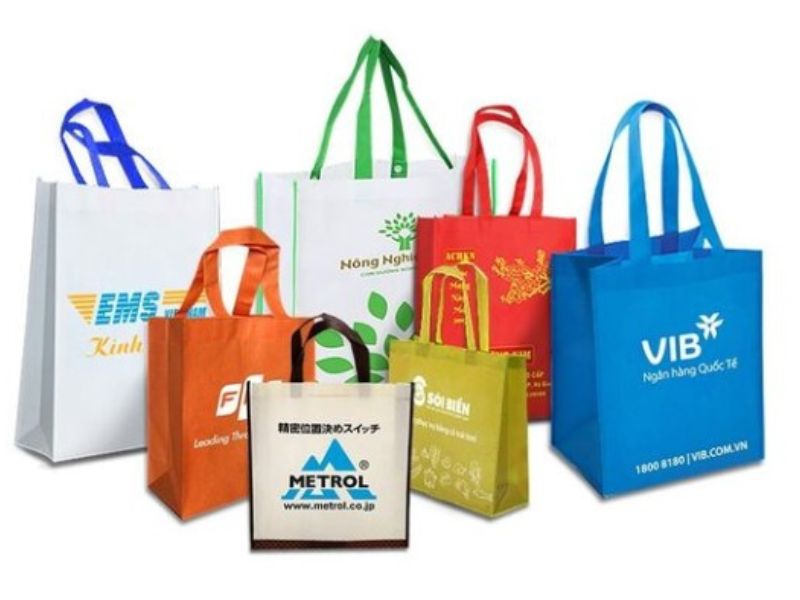
The application is designed specifically for the handbag industry, offering comprehensive solutions and features tailored to the needs and requirements of businesses operating in this sector. It provides a wide range of functionalities, such as inventory management, sales tracking, customer relationship management, and order processing, all seamlessly integrated into a user-friendly interface. With this application, handbag businesses can efficiently manage their operations, streamline their processes, and maximize their productivity. It enables them to keep track of their inventory, monitor sales and revenue, and analyze customer preferences and buying patterns, allowing for effective decision-making and strategic planning. Moreover, the application aids in managing the entire order fulfillment process, from receiving orders to tracking shipments and managing returns. By utilizing this specialized software, businesses in the handbag industry can enhance their overall efficiency, productivity, and competitiveness in the market.
Instructions for cleaning and washing polypropylene fabric. Follow these steps for optimal results.
Polypropylene fabric is incredibly easy to clean and maintain. Whether you choose to wash it by hand or in a washing machine, rest assured that the fabric won’t fade or get damaged during the process. Simply follow the regular washing and drying instructions for other types of fabrics.
In addition to regular cleaning, if you ever encounter stubborn stains on polypropylene bags, drawstring backpacks, or suitcases, there’s an extra solution. You can use an antibacterial spray specifically designed for cleaning purposes. This will effectively eliminate any bacteria and remove the stains, leaving your polypropylene items looking fresh and clean.

The following steps outline a detailed process for effectively cleaning and washing polypropylene fabric:
1. First, remove any loose dirt or debris from the fabric by gently shaking it or using a soft-bristle brush or vacuum cleaner attachment. This helps prevent further soiling during the cleaning process.
2. Check the label and manufacturer’s instructions for any specific cleaning recommendations or limitations for your polypropylene fabric. If there are specific instructions provided, follow them accordingly.
3. Fill a basin or sink with lukewarm water. Avoid using hot water, as it may damage or shrink the fabric.
4. Add a mild detergent to the water. Look for a detergent that is gentle and suitable for delicate fabrics. Avoid using bleach, strong chemicals, or abrasive cleaners, as they may harm the polypropylene material.
5. Gently agitate the water to create suds and distribute the detergent evenly.
6. Submerge the polypropylene fabric in the soapy water and gently swirl it around. Avoid rubbing or scrubbing vigorously, as this may cause damage or pilling.
7. Pay extra attention to any stained or soiled areas by lightly rubbing them with your fingers or a soft cloth.
8. Allow the fabric to soak in the soapy water for a few minutes, allowing the detergent to penetrate and loosen any dirt or stains.
9. Drain the soapy water from the basin or sink and refill it with clean lukewarm water.
10. Rinse the fabric thoroughly in the clean water, ensuring all detergent is removed. You may need to repeat this step several times until the water runs clear.
11. Gently press or squeeze the fabric to remove excess water. Avoid wringing or twisting the fabric, as this may distort its shape or cause stretching.
12. Hang or lay the polypropylene fabric flat to air dry. Avoid exposing it to direct sunlight, as this may cause fading over time.
13. Once the fabric is completely dry, gently brush or fluff it with a soft-bristle brush to restore its texture and appearance.
By following these detailed instructions, you can effectively clean and wash polypropylene fabric and maintain its quality and longevity.
The previous response provides the answer to the question “What is polypropylene (PP) fabric?” In addition to that, Fashion Bandung is a well-known supplier of this fabric, which is widely in demand today. It is hoped that the information provided above will give you a comprehensive understanding of the various uses and distinctive features of polypropylene fabric.
Fashion Bandung offers a wide range of fashionable clothing and accessories specifically designed for men. Our collection includes trendy outfits, stylish footwear, and accessories such as hats, sunglasses, and belts. Whether you are looking for formal wear for special occasions or casual attire for everyday wear, Fashion Bandung has it all. Our products are crafted with precision and attention to detail, ensuring that you not only look stylish but also feel comfortable. With our extensive selection of men’s fashion items, you can easily find the perfect outfit to express your personal style and make a statement.

